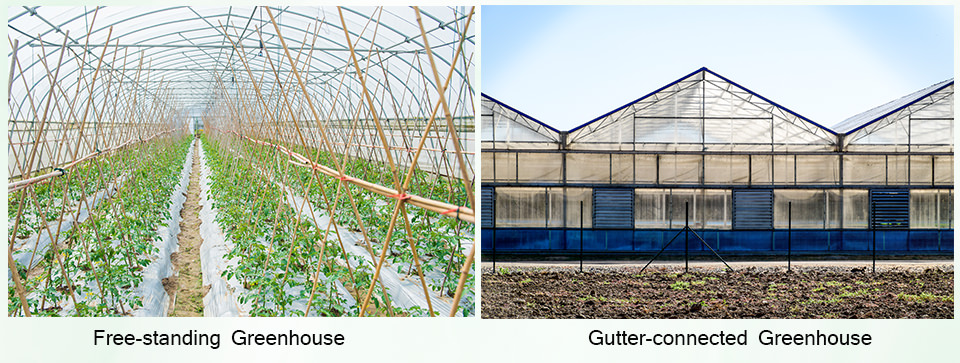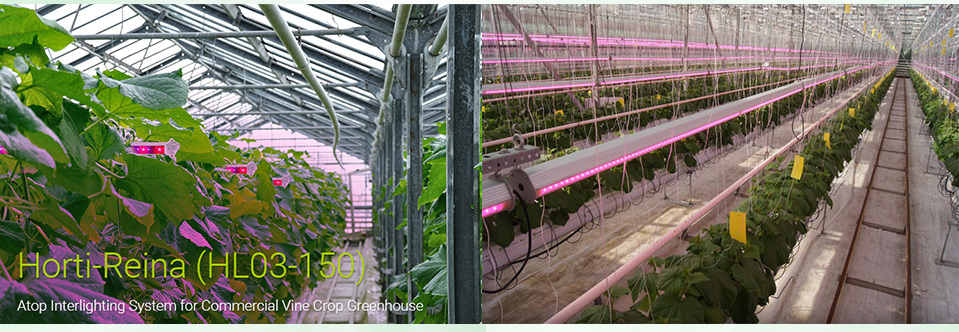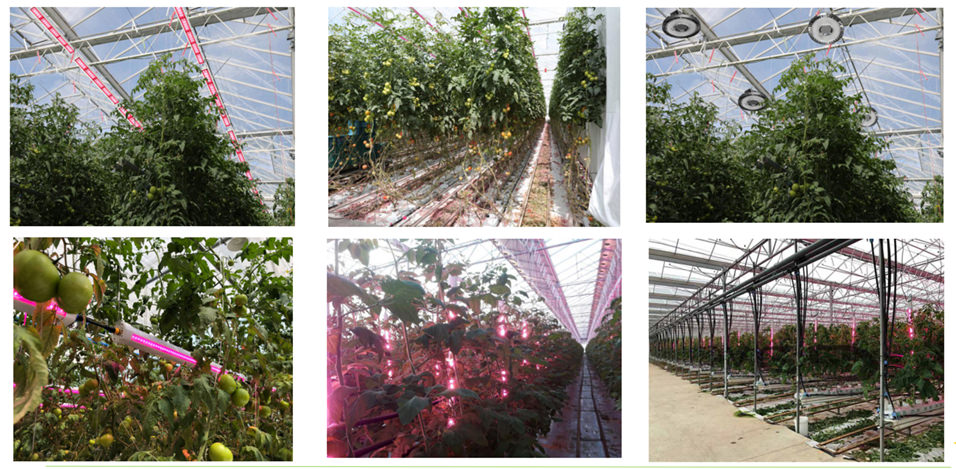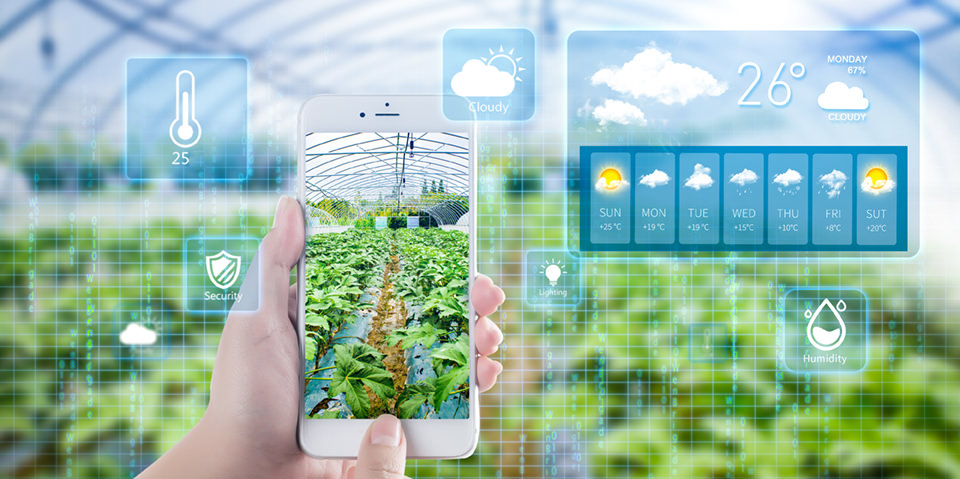Greenhouse of The Future, Autonomous & High-Tech
With the development of urbanization and the increase of urban population, food supply is critical for all over the world. It was estimated that global urban land cover will increase to 1,200,000 km² in 2050. The shortage of plantation urges people to study modern farming solutions, which is aimed to increase food production in a limited space. Greenhouse framing is one of the cultivation way to grow flowers, vegetables, fruits, and crops in all year round, improving yield and resisting the impact of climate changes. Nowadays, greenhouse is becoming more and more intelligent and smart with the progressive technology. It is environmental friendly and eco-friendly. Tough greenhouse still has shortcomings, it will be autonomous and of high-tech in the future. Constantly learning and developing new technologies so that we can solve the problems in near future.

Introduction of greenhouse
A greenhouse is a structure with roof and walls, providing excellent temperature increasing and heat preservation performance in clod weather. Framework and covers consist of a greenhouse. The framework is a supporting structure to hold up the covers over plants and crops. Metal, wire of hoops, taller curved hoop and PVC pipe arches are used as framework. The covers of greenhouse mainly include fabric, plastic and glass. A combination of hoops and plastic cover is the cheapest way for a greenhouse. However, glass greenhouses are normally used in commercial cultivation equipped with modern facilities, though they are more expensive than plastic one.
Greenhouses can be divide into free-standing and gutter-connected in commercial production. Free-standing greenhouse is easier to build and maintain and it is great for heavy snow areas. Gutter-connected greenhouse can reduce heating and electricity cost due to open-roof design.
Greenhouse is suitable for growing flowers, vegetables, fruits, and crops under severe cold conditions. It is also ideal for transplanting plants from one place to another with artificial environment. A greenhouse ranges from household to commercial production. For example, farmers grow tomatoes with greenhouse in early spring for pre-marketing and supply tomatoes in high quality, which help them reap more profits. Currently, heating, lighting, ventilating, breeding ground and other advanced technologies are widely used in greenhouse.
Growing factors in a greenhouse
-
Soil
Soil plays an important role in optimizing production and protecting environment from excess fertilizers. Different types of soil have different effects on plants or crops. PH, looseness and fertilizer degree have huge impact on plant growing. Excessive fertilizer can cause harm to the roof of plants. However, if plants are leak of fertilizer, they cannot grow robot enough, and even no fruit. Improper PH value and humidity rises the risk of death of plants.
-
Water
Adequate water is the key factor for growing in greenhouse. The amount of water is related to weather conditions, location of the plantation and the specific requirement of plants and crops. Except for the amount of water, watering more efficiently is also important in greenhouse. Most greenhouses irrigate plants with sprinklers or drip lines. Moreover, the excess water is collected and re-used for irrigation, recycling water from one cycle to the next. From the recycle of water, the use of fertilizer is also reduced as the retained nutrients in recycled water.
-
Lighting
In winter or late night, there is no sufficient lighting for growing. Thus, grow lights are added in most of the greenhouse. As we all know, LED lights are more efficient and cost-effective than other traditional lights. As a result, LED grow lights are the most popular options for growers. LED grow light produces light in suitable wavelength of radiation, allowing plants absorb more usable light. LED grow lights can supplement or substitute natural sunlight to plants or crops and therefore, growing more efficiently, conserving space and improving yields. Atop is a professional LED grow light manufacturer, providing high efficiency LED solution. If your are looking for LED grow light, consider Atop if possible.
-
Temperature
Both environment and soil temperature are critical for plants and crops growing. Most growers ignore the soil temperature but concentrate on environment temperature in greenhouses. Limited sunlight heat absorption of soil and the evaporation of water cause temperature difference between soil and surrounding environment. 75 °F to 90 °F is a range of appropriate soil temperature for seeds to germinate. Test the soil temperature and then adjust to the most comfortable one for growing. For a stable and suitable growing temperature, heating and cooling equipment are used to control temperature. Except for the natural temperature, the heat produced by facilities operation should also be considered.
-
Ventilation
Ventilation has an influence on temperature and the use of water. In hot summer, ventilation is important to air circulation, minimizing temperature difference and avoid over high temperature. Ventilation can prompt the evaporation and reduce water on plant surfaces. Too tight plant spacing will cause poor ventilation and as a result of disease problem. Fans are often used to ventilate in greenhouse. A greenhouse with retractable roof or open roof is more convenient for controlling ventilation.
-
Pets and disease
Pets and disease are present in water and soil at some level. But pesticides and fungicides also have effects on pH of water and soil. We should limit the use of pesticides and fungicides to reduce hazardous of plants or crops. Adopt integrated pesticide would be better for pesticide management. Clarifying the application and dosage of pesticide and fungicides is important for better pest control and reducing disease. Storing the pesticides and fungicides in a right way and proper places is significant to avoid harming public health and environment.
Challenges of greenhouse
-
Lack of pollination
The main limitation of greenhouses is the difficulties with pollination. Natural pollination is processed by wind, bees and other insects. But in a greenhouse, plants and crops are grown indoors and all factors are carefully controlled. Insects are not likely to appear in a enclosed greenhouse. As a result, growers will have to pollinate manually. However, manually pollination is labour intensive and costly. Growers have to pollinate in a appropriate time and fast speed. Besides, manually pollination is of less efficiency then a natural way.
-
Low illuminance intensity
Due to the unreasonable orientation of the building itself, the shade of the skeleton structure, and the absorption and reflection of the transparent cover, the amount of incident light in a greenhouse is significantly lower than the natural light in the same period. Generally, the light in greenhouse is about 40%-50% of natural illuminance. Tough glass greenhouse is transparent and able to transmit more light, it is costly. Insufficient light cannot conducive to photosynthesis, and affects growth, yield and quality of plants and crops. Therefore, artificial lighting, such as LED grow lights are useful for supplementing lighting for plants or crops. 
-
Expensive to build and operate
The whole process of greenhouse farming is more expensive than conventional cultivation. Building a greenhouse requires carefully selection of various material and structure. Generally speaking, polyethylene film cover can lasting about 4 years. Other more permanent material has a life of at last 15 years. But longer lifespan refers to higher cost as well. Additionally, cooling, heating, lighting and ventilation consume a mass of energy. The cost for monitoring should also be considered. Thus, the total cost of building and operating of greenhouses is expensive.
Autonomous & high-technology greenhouse

Greenhouse are going to continually be autonomous and high technology. Growers may simply use thermometer and hygrometer to test temperature and humidity manually in traditional greenhouses. Modern greenhouses are equipped with intelligent sensor, optimized lighting, real-time monitor and automatic alarm. Some of them even can achieve controlling all growing factors remotely. To provide the most suitable growing environment for plants and crops, water, temperature, soil, pH value, lighting, humidity and other factors are precisely adjusted by heating, cooling, irrigating, lighting and nursery systems.
Process of operating the greenhouse is simple. Sensors collect data and help operator to analysis and adjust relevant parameters to optimize growing environment, monitoring the growing environment factors that affect the plants and crop. Intelligent monitoring system transmits the parameters and data to operators. Operators analysis and make decisions to adjust growing parameters. Then the system sends orders to execution equipment. Thanks to intelligent sensors and monitoring system, real-time condition of the greenhouse area can be learned through cell phones or the Internet. The data management center can also analyze environmental parameters, making corresponding statistical reports and trend analysis, which is displayed to users in the form of intuitive pictures and curves. Operators can set the standard values for every parameter. If the practical values exceed the set values, the system will automatically turns on or off the remote monitoring function of the greenhouse. Then the system will alarm to operators by sound and light.
After reaching specific requirements, plants or crops grow better. Certain production and harvest are benefited due to the well controlled technique, the same as standard quality of plants. Year-round production allows higher supply for market. With the help of greenhouse, cultivation is less dependent on climate, making full use of the resource available to feed more people. As we are facing climate changes and resource shortage, greenhouses are becoming environmental friendly and economical friendly. For example, solar and geothermal heat are widely used in greenhouse. Water and nutrition are also re-used. When it comes to future, greenhouses are of autonomous and high technology.

